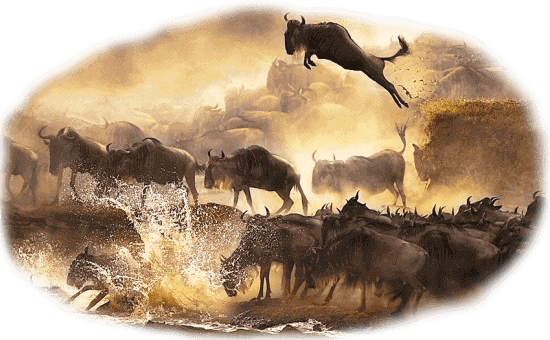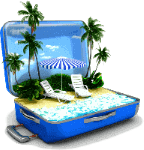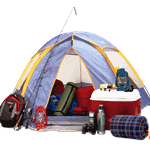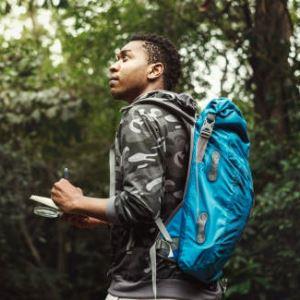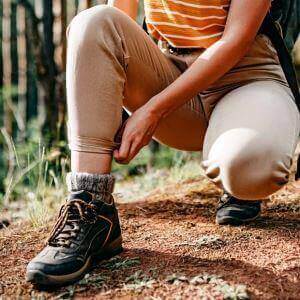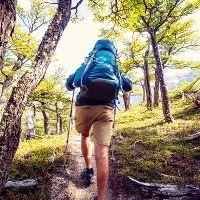 For Swiss travelers seeking a thrilling adventure beyond the borders of Europe, Mount Kenya offers a once-in-a-lifetime experience. Transitioning from the iconic Swiss Alps to the jagged, glacier-capped peaks of Mount Kenya provides a stunning contrast in scenery, climate, and culture. This guide is designed to help Switzerland-based adventurers prepare for and enjoy every aspect of their Mount Kenya journey. Mount Kenya, Africa’s second-highest mountain, offers a variety of trekking routes suited to different skill levels. Swiss tourists will find the Sirimon route particularly appealing due to its gentle ascent and scenic views, making it ideal for acclimatization. The Chogoria route is equally popular for its stunning valleys, lakes, and dramatic cliffs, perfect for Swiss photographers and nature lovers. More experienced hikers may opt for the Naro Moru route, which is steeper and quicker but offers a challenging climb. Timing your adventure is key. For Swiss travelers accustomed to alpine climates, the best time to explore Mount Kenya is during the dry seasons January to March and July to October. These months provide clear skies and stable conditions for trekking. However, for those seeking fewer crowds and a slightly cooler atmosphere, the shoulder months of June and November are excellent alternatives. Swiss tourists are encouraged to check local weather updates before finalizing travel dates. Wildlife and natural beauty are part of Mount Kenya’s irresistible charm. Swiss nature enthusiasts will appreciate the chance to see unique African wildlife such as elephants, buffaloes, and various species of monkeys, especially in Mount Kenya National Park. Birdwatchers will also be delighted by the area’s rich avian diversity. Scenic gems like Lake Ellis and the Gorges Valley reward travelers with breathtaking panoramas and peaceful rest spots during hikes. To ensure a safe and enjoyable journey, Swiss travelers should prepare with appropriate gear including sturdy hiking boots, layered clothing for varying altitudes, and sun protection. Hiring a local guide is strongly recommended to enhance the experience and support the local community. Don’t forget essentials like altitude medication, binoculars, and a camera to capture unforgettable memories. Whether you're an experienced mountaineer or a nature-loving explorer, Mount Kenya offers a rewarding and multifaceted adventure for every Swiss traveler. From the snow-capped peaks of the Alps to the glacial heights of Mount Kenya, the journey is a thrilling leap into Africa's rich natural and cultural landscape. For Swiss tourists, this experience goes far beyond the climb itself it’s about immersion in unique biodiversity, engaging with local communities, and pushing personal boundaries in an unfamiliar but stunning terrain. The dramatic shift from Switzerland’s familiar alpine environments to Mount Kenya’s rugged, equatorial highlands provides a fresh and exhilarating perspective. This mountain is more than a destination; it’s a connection point between two continents, a challenge for the body, and nourishment for the soul. Swiss travelers often find the journey to Mount Kenya not only physically invigorating but deeply rewarding on an emotional and spiritual level. Whether capturing panoramic views from Point Lenana or quietly watching wildlife in the misty forests below, each moment holds lasting impact. From alpine roots to African summits, Mount Kenya promises awe, personal growth, and a profound appreciation for the wonders of the natural world.
For Swiss travelers seeking a thrilling adventure beyond the borders of Europe, Mount Kenya offers a once-in-a-lifetime experience. Transitioning from the iconic Swiss Alps to the jagged, glacier-capped peaks of Mount Kenya provides a stunning contrast in scenery, climate, and culture. This guide is designed to help Switzerland-based adventurers prepare for and enjoy every aspect of their Mount Kenya journey. Mount Kenya, Africa’s second-highest mountain, offers a variety of trekking routes suited to different skill levels. Swiss tourists will find the Sirimon route particularly appealing due to its gentle ascent and scenic views, making it ideal for acclimatization. The Chogoria route is equally popular for its stunning valleys, lakes, and dramatic cliffs, perfect for Swiss photographers and nature lovers. More experienced hikers may opt for the Naro Moru route, which is steeper and quicker but offers a challenging climb. Timing your adventure is key. For Swiss travelers accustomed to alpine climates, the best time to explore Mount Kenya is during the dry seasons January to March and July to October. These months provide clear skies and stable conditions for trekking. However, for those seeking fewer crowds and a slightly cooler atmosphere, the shoulder months of June and November are excellent alternatives. Swiss tourists are encouraged to check local weather updates before finalizing travel dates. Wildlife and natural beauty are part of Mount Kenya’s irresistible charm. Swiss nature enthusiasts will appreciate the chance to see unique African wildlife such as elephants, buffaloes, and various species of monkeys, especially in Mount Kenya National Park. Birdwatchers will also be delighted by the area’s rich avian diversity. Scenic gems like Lake Ellis and the Gorges Valley reward travelers with breathtaking panoramas and peaceful rest spots during hikes. To ensure a safe and enjoyable journey, Swiss travelers should prepare with appropriate gear including sturdy hiking boots, layered clothing for varying altitudes, and sun protection. Hiring a local guide is strongly recommended to enhance the experience and support the local community. Don’t forget essentials like altitude medication, binoculars, and a camera to capture unforgettable memories. Whether you're an experienced mountaineer or a nature-loving explorer, Mount Kenya offers a rewarding and multifaceted adventure for every Swiss traveler. From the snow-capped peaks of the Alps to the glacial heights of Mount Kenya, the journey is a thrilling leap into Africa's rich natural and cultural landscape. For Swiss tourists, this experience goes far beyond the climb itself it’s about immersion in unique biodiversity, engaging with local communities, and pushing personal boundaries in an unfamiliar but stunning terrain. The dramatic shift from Switzerland’s familiar alpine environments to Mount Kenya’s rugged, equatorial highlands provides a fresh and exhilarating perspective. This mountain is more than a destination; it’s a connection point between two continents, a challenge for the body, and nourishment for the soul. Swiss travelers often find the journey to Mount Kenya not only physically invigorating but deeply rewarding on an emotional and spiritual level. Whether capturing panoramic views from Point Lenana or quietly watching wildlife in the misty forests below, each moment holds lasting impact. From alpine roots to African summits, Mount Kenya promises awe, personal growth, and a profound appreciation for the wonders of the natural world.
Mount Kenya Travel Information Table for Swiss Tourists
| Category | Details |
|---|---|
| Best Travel Months | January to March, July to October |
| Top Trekking Routes | Sirimon, Chogoria, Naro Moru |
| Wildlife You May Encounter | Elephants, Buffaloes, Colobus Monkeys, Various Birds |
| Nearby Scenic Spots | Lake Ellis, Gorges Valley, Mount Kenya National Park |
| Recommended Gear | Hiking boots, warm clothing, binoculars, camera, waterproof backpack |
| Local Travel Tips | Hire a local guide, check weather updates, carry altitude medication |
Best Time To Visit Mount Kenya For Swiss Tourists From Switzerland
For Swiss tourists planning a trek to Mount Kenya, timing can make all the difference. The mountain's location near the equator gives it two main dry seasons that are ideal for hiking: January to March and July to October. These periods provide the best weather conditions minimal rainfall, clear skies, and more predictable trail access. Swiss travelers accustomed to snowy Alpine adventures will appreciate the comparably mild temperatures and lower humidity levels during these months. January to March tends to be slightly warmer and less crowded, while July to October is often preferred for its cooler climate and vivid landscapes. The shoulder seasons of June and November also hold appeal for the adventurous Swiss traveler. During these transitional months, fewer visitors frequent the park, making it a quieter and often more intimate experience with nature. While light rains are possible, the scenery remains stunning, and accommodations are generally more available and affordable. These months can be a great choice for those seeking solitude and a bit of spontaneity in their travels. Swiss tourists should remember to monitor Kenya’s local weather forecasts before departure, as mountain conditions can change rapidly and unexpectedly. Weather at high altitudes is often unpredictable, with sudden drops in temperature and fast-moving clouds that can affect visibility. This is especially important for Swiss hikers who may be accustomed to well-mapped and heavily serviced Alpine trails. Regardless of the month you choose for your adventure, preparation and flexibility are key to making the most of your Mount Kenya trek. Be ready to adjust your itinerary if weather or trail conditions demand it. Bringing the right clothing for both warm, sunny days and chilly, damp nights is essential. Layering is the best strategy to adapt to changing temperatures. Don’t forget waterproof gear and a sun hat the equatorial sun at high altitude can be intense. Swiss travelers should also consider the effects of altitude and be prepared with proper acclimatization plans. Taking a day or two to rest and adjust before tackling higher elevations can help prevent altitude sickness. Guided tours often include this buffer in their itineraries and provide invaluable local knowledge that adds both safety and cultural depth to your experience. With the right planning and a flexible mindset, your Mount Kenya adventure can be one of the most rewarding journeys of your life. The mountain offers more than just stunning landscapes and high-altitude trekking; it provides a holistic experience that touches the mind, body, and soul. For Swiss tourists, the contrast between the Swiss Alps and Mount Kenya’s equatorial environment creates a captivating adventure that broadens one’s perspective. From navigating steep ridges and misty forests to waking up in mountain huts surrounded by spectacular views, each moment is filled with discovery. Interactions with local guides and communities add cultural richness to the journey, making it feel personal and meaningful. Whether you reach Point Lenana or spend time exploring the lower forest zones, Mount Kenya promises unforgettable memories and stories to share for a lifetime. This isn’t just a mountain to climb; it’s a destination to experience with your whole being.
Ideal Seasons to Climb Mount Kenya for Swiss Tourists in Kenya
Mount Kenya, with its breathtaking peaks, lush forests, and alpine meadows, is a dream destination for many Swiss tourists. Its dramatic elevation and equatorial location create a unique climate that differs greatly from the familiar Alpine conditions in Switzerland. To fully enjoy the experience and make the most of your trek, it is crucial to choose the right time of year. The weather and trail conditions can vary significantly with the seasons. Dry periods offer safer, clearer trekking paths, while wet seasons bring lush beauty but also muddy and slippery trails. Knowing when to go can significantly enhance your overall adventure.
- January to March (Dry Season): These months offer some of the clearest skies and driest conditions, making them a favorite among Swiss tourists. The weather is reliably warm during the day and cooler at night, allowing for comfortable trekking without the extremes of heat or cold. For visitors from Switzerland, this season provides a pleasant contrast to their snowy winters, offering dry, sun-filled days perfect for exploring. Visibility is typically excellent, which enhances both safety and the visual appeal of the climb. These months are also less crowded than other peak seasons, giving hikers more solitude on the trails. The clear conditions are ideal for photography, especially during sunrise and sunset, when Mount Kenya’s peaks glow with breathtaking colors. Wildlife sightings are frequent along lower elevations, and flora is lush without being overgrown. For those looking to experience Mount Kenya in prime condition, January to March is a top recommendation.
- July to October (Cooler and Dry Season): Arguably the best time to visit, this season offers cooler temperatures, crisp mountain air, and generally dry conditions that enhance the trekking experience. For Swiss tourists familiar with high-altitude alpine environments, this period feels comfortably familiar, with the added thrill of African landscapes. Trails are well-maintained and less muddy, reducing the risk of injury and making hikes more enjoyable. Wildlife is particularly active, with animals often coming out in the early mornings and late afternoons when temperatures are mild. Birdwatchers and photographers will also appreciate the clear skies and bright light during this time. The mountain vegetation is lush yet passable, and the cooler nights provide restful sleep after a day of adventure. Swiss visitors looking for the perfect balance between comfort and challenge often find these months ideal for achieving their trekking goals while soaking in the diverse beauty that Mount Kenya has to offer.
- June and November (Shoulder Seasons): These transitional months are ideal for Swiss tourists seeking a quieter, more introspective mountain experience. With fewer crowds on the trails, hikers can enjoy the serenity of Mount Kenya’s landscapes and wildlife in a more personal setting. Although there is a higher chance of rain, it’s usually light and scattered, allowing for trekking during large parts of the day. The scenery is especially lush, with vibrant green vegetation and blooming flora adding a layer of beauty to your photos and memories. Accommodation is often more affordable and available without the need for advanced booking. For those comfortable with some unpredictability and looking for a peaceful, budget-conscious journey, June and November are excellent options. The weather may bring some surprises, but the rewards solitude, savings, and scenic splendor are well worth the gamble.
Choosing the right season ensures a safer, more enjoyable, and ultimately more rewarding Mount Kenya climb. For Swiss tourists, understanding the unique weather patterns of Mount Kenya is essential, especially when comparing them to the alpine climates of Switzerland. Dry seasons like January to March and July to October provide ideal conditions for visibility, comfort, and trail access. These months also offer the best chances to witness wildlife and scenic beauty without weather-related disruptions. Travelers from Switzerland should also account for altitude acclimatization, ensuring a smoother and healthier ascent. Local guides not only enhance safety but also enrich the cultural experience with insights about the landscape, flora, fauna, and local communities. Always monitor local forecasts before and during your trip, and pack accordingly to adapt to changing conditions. A well-timed visit not only maximizes your adventure but also deepens your connection to one of Africa's most captivating natural wonders.
Top Mount Kenya Trekking Routes for Swiss Tourists to Explore
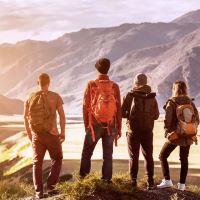 For Swiss tourists venturing to Mount Kenya, selecting the right trekking route is an essential part of crafting a successful adventure. Mount Kenya, with its dramatic peaks, glacier-fed lakes, and diverse vegetation zones, offers a variety of trails suitable for all experience levels. From gentle climbs to demanding ascents, each route offers a different glimpse into Kenya’s natural wonders and cultural richness. One of the most popular routes among Swiss tourists is the Sirimon Route. Approaching from the northwest, this trail is favored for its gentle slope and excellent acclimatization profile. The route passes through lush forests, moorland, and the surreal alpine zone, eventually leading to Point Lenana. Swiss hikers appreciate the scenic vistas and the gradual ascent, which makes it both enjoyable and relatively accessible. The Chogoria Route is often described as the most picturesque trail on Mount Kenya. Starting from the east, it is known for its breathtaking landscapes, including the Gorges Valley, Lake Ellis, and the spectacular views of the Temple and Hall Tarns. This route is ideal for Swiss photographers and nature lovers seeking dramatic scenery and fewer crowds. For seasoned Swiss adventurers looking for a physical challenge, the Naro Moru Route is a more direct and steep option. While it is the shortest route to Point Lenana, it is also the most demanding. Known for the infamous "Vertical Bog," the trail can be tough during wet conditions, but it offers a fast-paced climb for those on a tighter schedule or aiming for a more intense experience. Many Swiss tourists choose to combine routes, such as ascending via Sirimon and descending through Chogoria, to maximize both scenery and adventure. This allows for a more diverse trekking experience and the opportunity to see multiple sides of the mountain. No matter which route Swiss travelers choose, hiring a certified local guide is highly recommended and can be the key to a fulfilling experience. Guides not only enhance safety by navigating challenging terrains and managing emergencies, but they also provide invaluable cultural insights and local knowledge that enrich the entire trek. They often share stories of the mountain's significance to Kenyan communities, highlight hidden viewpoints, and introduce travelers to unique flora and fauna. Guides also play a critical role in promoting sustainable tourism. By hiring local professionals, Swiss tourists directly support the livelihoods of the communities surrounding Mount Kenya. This economic contribution helps preserve the environment and maintain the trails for future adventurers. Each trail offers a unique adventure, and the ideal route for Swiss tourists depends on factors such as personal fitness, time constraints, desired scenery, and trekking experience. The Sirimon route is a favorite for its gentle ascent and scenic variety, making it ideal for beginners or those who value a slower pace. The Chogoria route appeals to nature lovers and photographers, with its dramatic ridges, lakes, and panoramic views providing a visually rich experience. Meanwhile, the Naro Moru route is a direct, more physically demanding trail best suited for experienced hikers looking for a challenge in a shorter timeframe. Whichever trail you choose, pairing your route with a knowledgeable local guide greatly enhances safety and the overall cultural experience. These experts help you navigate complex terrains and introduce you to Mount Kenya's ecological and cultural heritage. With proper planning, the right support, and an adventurous spirit, climbing Mount Kenya becomes more than just a goal it becomes a personal and transformative journey deep into the heart of East Africa.
For Swiss tourists venturing to Mount Kenya, selecting the right trekking route is an essential part of crafting a successful adventure. Mount Kenya, with its dramatic peaks, glacier-fed lakes, and diverse vegetation zones, offers a variety of trails suitable for all experience levels. From gentle climbs to demanding ascents, each route offers a different glimpse into Kenya’s natural wonders and cultural richness. One of the most popular routes among Swiss tourists is the Sirimon Route. Approaching from the northwest, this trail is favored for its gentle slope and excellent acclimatization profile. The route passes through lush forests, moorland, and the surreal alpine zone, eventually leading to Point Lenana. Swiss hikers appreciate the scenic vistas and the gradual ascent, which makes it both enjoyable and relatively accessible. The Chogoria Route is often described as the most picturesque trail on Mount Kenya. Starting from the east, it is known for its breathtaking landscapes, including the Gorges Valley, Lake Ellis, and the spectacular views of the Temple and Hall Tarns. This route is ideal for Swiss photographers and nature lovers seeking dramatic scenery and fewer crowds. For seasoned Swiss adventurers looking for a physical challenge, the Naro Moru Route is a more direct and steep option. While it is the shortest route to Point Lenana, it is also the most demanding. Known for the infamous "Vertical Bog," the trail can be tough during wet conditions, but it offers a fast-paced climb for those on a tighter schedule or aiming for a more intense experience. Many Swiss tourists choose to combine routes, such as ascending via Sirimon and descending through Chogoria, to maximize both scenery and adventure. This allows for a more diverse trekking experience and the opportunity to see multiple sides of the mountain. No matter which route Swiss travelers choose, hiring a certified local guide is highly recommended and can be the key to a fulfilling experience. Guides not only enhance safety by navigating challenging terrains and managing emergencies, but they also provide invaluable cultural insights and local knowledge that enrich the entire trek. They often share stories of the mountain's significance to Kenyan communities, highlight hidden viewpoints, and introduce travelers to unique flora and fauna. Guides also play a critical role in promoting sustainable tourism. By hiring local professionals, Swiss tourists directly support the livelihoods of the communities surrounding Mount Kenya. This economic contribution helps preserve the environment and maintain the trails for future adventurers. Each trail offers a unique adventure, and the ideal route for Swiss tourists depends on factors such as personal fitness, time constraints, desired scenery, and trekking experience. The Sirimon route is a favorite for its gentle ascent and scenic variety, making it ideal for beginners or those who value a slower pace. The Chogoria route appeals to nature lovers and photographers, with its dramatic ridges, lakes, and panoramic views providing a visually rich experience. Meanwhile, the Naro Moru route is a direct, more physically demanding trail best suited for experienced hikers looking for a challenge in a shorter timeframe. Whichever trail you choose, pairing your route with a knowledgeable local guide greatly enhances safety and the overall cultural experience. These experts help you navigate complex terrains and introduce you to Mount Kenya's ecological and cultural heritage. With proper planning, the right support, and an adventurous spirit, climbing Mount Kenya becomes more than just a goal it becomes a personal and transformative journey deep into the heart of East Africa.
Popular Hiking Trails on Mount Kenya for Swiss Adventure Seekers
Mount Kenya's dramatic terrain offers an unforgettable trekking experience for Swiss adventure seekers. Whether you're a seasoned mountaineer or a nature-loving hiker, the trails around Mount Kenya provide breathtaking scenery, varied difficulty levels, and opportunities for cultural encounters. Choosing the right route can shape your entire adventure. Each path to the summit reveals a unique side of the mountain, from lush forests and alpine moorlands to glaciers and jagged peaks. Below are the most popular trails explored by Swiss tourists, each explained with what makes them exceptional and how to prepare for them.
- Sirimon Route: This is the most gradual and popular trail among Swiss tourists. It starts from the northwest and offers a comfortable acclimatization profile, making it ideal for beginner to intermediate hikers. The Sirimon Route passes through rich forests, bamboo zones, and high-altitude moorlands with incredible views of Mount Kenya's iconic peaks. Swiss hikers often choose this route for its scenic beauty and relative ease. Wildlife sightings are common, and the trail offers several camping spots along the way. Its moderate incline helps reduce the risk of altitude sickness, making the experience safer and more enjoyable.
- Chogoria Route: For Swiss adventurers seeking breathtaking vistas, the Chogoria Route is the most scenic trail. Entering from the eastern side of the mountain, this trail features dramatic landscapes including waterfalls, cliffs, and alpine lakes like Lake Ellis. The trail winds through the stunning Gorges Valley and offers wide, open views that are a dream for photographers. While the trail is longer and slightly more remote, the unique geological formations and abundant flora make it a favorite for nature enthusiasts. Many Swiss tourists combine this with the Sirimon Route for a diverse trekking experience.
- Naro Moru Route: This is the shortest and most direct trail to Point Lenana, Mount Kenya's third-highest peak. It is best suited for experienced hikers from Switzerland looking for a fast, challenging ascent. The Naro Moru Route is famous for the "Vertical Bog," a steep and often muddy section that tests endurance and skill. Despite its difficulties, the trail is popular due to its quick access and efficient summit approach. Swiss climbers who are short on time but ready for a physically demanding trek often find this route appealing. Weather conditions can make this path slippery, so proper footwear and preparation are crucial.
Wildlife and Scenic Spots Near Mount Kenya for Swiss Travelers
For Swiss travelers drawn to nature and wildlife, Mount Kenya offers more than just towering peaks and alpine trails. It is a biodiversity hotspot, rich with flora and fauna that contrasts starkly with the ecosystems of Switzerland. Whether you’re on a guided trek or exploring the lower altitudes, the region surrounding Mount Kenya promises awe-inspiring encounters with East Africa’s natural beauty. One of the main highlights for Swiss tourists is the Mount Kenya National Park, a UNESCO World Heritage Site known for its ecological variety. Visitors can spot iconic African wildlife such as elephants, buffaloes, bushbucks, hyenas, and the striking black-and-white colobus monkeys. The park is also a paradise for birdwatchers, with over 130 species recorded, including sunbirds, turacos, and crowned eagles. For Swiss bird enthusiasts used to Alpine species, this offers an exciting new range of avian life to observe and photograph. Scenic areas like Lake Ellis and the Gorges Valley provide ideal settings for relaxing and soaking in the surroundings after a challenging trek. Lake Ellis, with its mirror-like waters, reflects the peaks and sky in tranquil beauty, while the Gorges Valley offers sweeping views, dramatic cliffs, and alpine flora unique to the region. These spots are excellent for rest stops, photography, and quiet appreciation of nature. Swiss travelers are advised to carry binoculars, a quality camera, and layered clothing to accommodate Mount Kenya's unpredictable temperature shifts. Mornings can be crisp, afternoons warm, and evenings chilly, especially at higher altitudes. Proper preparation ensures you’re comfortable and ready to enjoy the full experience. A local reputable tour guide can significantly enrich your journey, offering deep insights into the region’s wildlife, geography, and cultural significance. Their trained eyes and knowledge can help you spot elusive animals like leopards or rare bird species that may otherwise go unnoticed. More than just a visual spectacle, these natural encounters offer a profound emotional and sensory experience, deepening the traveler’s connection to the environment. Observing a herd of elephants peacefully grazing beneath the backdrop of Mount Kenya’s icy peaks or catching a glimpse of a rare turaco darting through the misty canopy can be transformative. These experiences inspire awe and a renewed appreciation for biodiversity and conservation. For many Swiss tourists, who may be used to structured alpine settings, the wild and unfiltered nature of Mount Kenya is both humbling and rejuvenating. The early morning air is filled with birdsong, and the forests seem to whisper ancient stories, adding a mystical element to each trek. Moments like watching the sun rise over Gorges Valley or encountering a colobus monkey mid-trail become cherished memories. For travelers seeking more than just physical achievement, Mount Kenya offers a soulful, immersive journey that stays with you long after your boots have left the trail.
Best Nature Viewing Areas Near Mount Kenya for Swiss Tourists
Mount Kenya is not just a climbing destination; it is a sanctuary of diverse wildlife and mesmerizing landscapes that offer unforgettable nature viewing opportunities for Swiss tourists. The region’s elevation range and varying ecosystems allow for the coexistence of multiple animal species and plant life, making it a haven for nature lovers and photographers. Swiss travelers will find Mount Kenya National Park to be the premier location for observing wildlife in its natural habitat. As a UNESCO World Heritage Site, the park is home to elephants, buffaloes, antelopes, colobus monkeys, and even the elusive leopard. For birdwatching enthusiasts, the park provides sightings of over 130 bird species, including rare and colorful varieties like the Tacazze sunbird and the African crowned eagle. Beyond wildlife, scenic highlights await at spots like Lake Ellis, which lies on the Chogoria route and is famed for its glassy, reflective waters. It’s a tranquil place to rest, take photographs, or simply enjoy the serenity of nature. Another standout is the Gorges Valley, where dramatic escarpments and panoramic views unfold, making it one of the most picturesque viewpoints on the mountain. Swiss tourists, accustomed to the ordered beauty of the Alps, will appreciate the raw, untamed quality of Mount Kenya's landscapes. The flora is equally diverse, ranging from tropical rainforest species at lower altitudes to Afro-alpine plants at higher elevations, such as the giant lobelia and groundsels. To make the most of these experiences, it’s advisable to travel with a knowledgeable local guide. Their expertise enhances animal spotting, shares cultural insights, and ensures safety on the trails. The best times for viewing wildlife are in the early morning or late afternoon when animals are most active. Mount Kenya's natural charm offers Swiss tourists more than just impressive vistas; it delivers deeply enriching moments of quiet reflection and a profound connection to Africa's unique ecosystems. Beyond the physical adventure of climbing, nature viewing in the region becomes a sensory and emotional experience. The diverse landscape from tropical forests to high-altitude moorlands supports an equally wide range of wildlife and flora. These natural wonders evoke a sense of awe and curiosity in travelers used to the neatly structured beauty of the Swiss Alps. Whether it’s through the lens of a camera capturing a herd of elephants at sunrise, or standing silently in an alpine valley listening to birdcalls echo through the mist, every moment in Mount Kenya's wilderness feels intimate and extraordinary. The mountain’s raw, untouched beauty is both humbling and energizing. For many Swiss tourists, this deep encounter with nature becomes a highlight of their journey, one that stays vivid in memory long after they return home.
